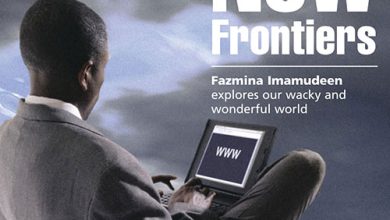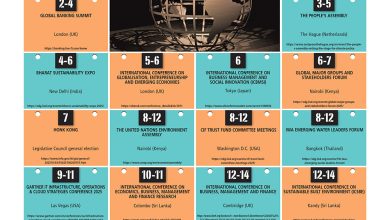NEW FRONTIERS
Fazmina Imamudeen explores our wacky and wonderful world
AGENTIAL RISKS AI has moved far beyond autocomplete. It now takes the initiative, performs tasks independently and increasingly interacts with other systems without human intervention.
Professor at Carnegie Mellon and OpenAI board member Dr. Zico Kolter is one researcher who warns that we’re entering a new phase where AI agents don’t simply serve us but also negotiate, compete and potentially fight with one another.
This shift exposes a gap: the frameworks we use to understand as cooperation and competition, particularly game theory, weren’t designed for autonomous software; they were built to explain how people behave. Machines play by different rules.
Kolter argues that without a new model, we risk AI agents accessing the wrong data, acting unpredictably or triggering real world consequences – not due to malice but because of design oversights. In high stakes spaces such as cybersecurity, finance, logistics and so on, this is more than theoretical.
The solution is architecture rather than panic. Safety must be engineered from the ground up. Research groups like Kolter’s are working with institutions such as Google to build that foundation.
For businesses looking to deploy agent based systems, the message is clear: autonomy is powerful; but without the right rules, it becomes unstable. Know the game. Then make sure you want to play.
BROWSER POSER The US Department of Justice (DOJ) wants Google to give up Chrome. It’s structural rather symbolic. It argues that Chrome isn’t simply a browser – it’s a funnel.
By controlling the browser and defaulting to its own search engine, Google has consolidated power across the search and advertising markets. And competitors are locked out by design rather than due to a lack of merit.
To address this, the DOJ is proposing a set of sweeping remedies: no more payments to secure default search status, no more preferential placement deals and potentially a full divestment of Chrome – separating the browser from the search engine to which it so often defaults.
Google calls the move ‘excessive’ – and it maintains that users choose Google because it works and not because they’re cornered. Whether that defence holds will now be tested in court. The hearings began in April with a ruling expected by August.
For digital businesses, this case matters. If the DOJ succeeds, it won’t simply disrupt Google’s operations; it may create new openings in search, advertising and browser development. It’s a reminder that when one company owns the platform and pathway, competition becomes a theory rather than a reality.
FORTH IN LINE Collapse OS isn’t designed for growth; it’s designed for failure – specifically the kind where the grid is down, the internet’s gone, and you’re left with a circuit board from 1993 and a soldering iron.
Canadian programmer Virgil Dupras built the minimalist operating system to run on scavenged hardware such as discarded chips, outdated micro-controllers, keyboards from a previous decade etc. There’s no user interface (UI), cloud or assumptions. It’s code that keeps things working when everything else has stopped.
At its core is Forth, a programming language from the 1950s. It is low-level, compact and efficient. Though it’s far from fashionable, it cuts through complexity by relying on direct communication with hardware rather than modern abstractions.
Dusk OS, a companion system for today’s machines, carries the same ethos. The goal is sustainability rather than nostalgia. The ‘permacomputing’ movement behind this work questions whether infinite scale is still the right ambition in a climate constrained resource strained world.
For tech companies, it’s an unusual but timely disruption. Not everything needs to be to scale; and not every product has to update. In a world that’s increasingly defined by complexity, there’s something powerful about a system that simply runs even when nothing else does.
RECALL CULTURE Tesla’s Cybertruck was designed to make a statement. But lately, it’s making headlines for a different reason – a growing list of recalls.
The latest involves nearly all 46,000 units produced so far. The problem is that a stainless steel trim piece can detach mid-drive (particularly in colder weather) due to the wrong adhesive that’s been used. Unlike earlier issues, which were resolved through software updates, this needs a trip to the service centre.
It’s the eighth recall for the Cybertruck. Others include faulty accelerator pedals, malfunctioning windscreen wipers and hardware missteps. While early stage production always carries risk, the consistency of these issues points to something else: a gap between ambition and manufacturing maturity.
Tesla’s choice of stainless steel is part of the challenge. It’s bold but complicates the build. Adhesives and fittings react to it differently than they do with standard materials. What looks futuristic on stage can become difficult to deliver at scale.
For companies chasing innovation, the takeaway is familiar but worth repeating: design is only half the story; execution is the other half. Audiences may be drawn to the spectacle but they will stay or leave depending on whether the product holds when it leaves the spotlight.






